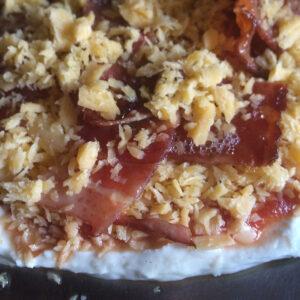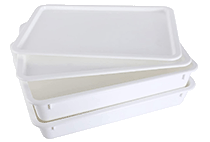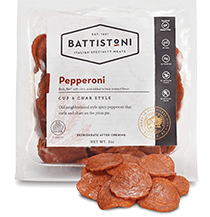
Ever wonder why people have such strong opinions when it comes to pizza? It’s because homemade pizza myths are pervasive. As one of the most common and beloved restaurant items around the world, it’s hard to find anyone who doesn’t have their favorite style and toppings.
These days, the dish is found just as often as a Friday night staple in many home kitchens, and amateur pizzaiolos are using pizza stones and peels to develop their own unique methods.
However, when you’re still developing your own pizza technique, it’s not always easy to tell the difference between fact and myth. If you want to avoid getting fooled, be sure to check out some of the most common ones right here.
Say Goodbye to These Homemade Pizza Myths
Fresh mozzarella is the only real pizza cheese
Fresh mozzarella, the kind sold in large balls submerged in water, is an Italian delicacy that goes great with fresh tomatoes and basil. Because of this, many people assume it’s a natural choice for authentic pizza. While you will often see fresh mozzarella used in restaurant pizza, especially of the Margherita variety, there’s a good reason why it’s not an ideal choice for homemade pizza.
The main difference between fresh mozzarella and the shredded cheese you find in a bag is that fresh mozzarella has a much higher moisture content. In a commercial oven that can get as hot as 800 degrees, much of this moisture will be cooked off. However, this may not be the case in your home oven, possibly resulting in a soggy crust and toppings that slide right off.
Low and slow baking makes for good pizza crust
A lot of people think that because pizza crust is a type of bread it should be treated like a typical baguette or sourdough loaf. This couldn’t be further from the truth. Baking your pizza at 350 or even 400 degrees will only leave you with a floppy crust and overcooked toppings.
So what is the best temperature for making homemade pizza? As high as your oven will allow. Commercial pizza ovens can be cranked up as hot as 700 or 800 degrees, and while you probably can’t achieve such high temperatures at home, 500 should be enough.
A professional oven is the only way to make authentic pizza
While professional pizza ovens are a great way to turn out top-tier pizzas, the truth is that they’re not the only way to produce a perfectly crisp crust. The secret is taking advantage of your oven’s full heat output.
One way to do this is with a pizza stone. As your oven preheats, place the stone on the rack and allow it a full 45 minutes to get to temperature. During this time, the stone will get screaming hot and as soon as you (carefully!) transfer the raw dough to its surface, it will sear the perfect finish to your crust with a satisfying sizzle. To simplify the transfer process, you can try using a pizza peel as well.
All leftover pizza needs is a minute in the microwave
We won’t judge you no matter how you like your leftover pizza, whether that’s in the microwave or straight out of the fridge. However, if you’re looking to recapture that fresh from the oven flavor there’s a simple trick you should know.
Heat a nonstick skillet to medium and arrange a slice or two of leftover pizza in the center of the pan. After a few minutes, your bottom should be crisp and your cheese should be nicely melted. At this point, you can replate and eat immediately.
Though if you’d like to go the extra mile, drizzle a few drops of water in the pan, turn down the heat, and cover for one extra minute. This will leave you with a fluffier crust and more evenly melted cheese.
The best pizza crust takes time
Okay, so this one is technically true. To get a perfectly crisp and soft pizza crust, you should proof your dough (allow it to rise) for at least an hour before baking. However, many pizza aficionados will have you believe that the best pizza proofs for two or even three days to get just the right flavor and texture. But is this just a myth?
The fact is, it all comes down to preference. Proofing dough for three days will get a unique flavor (a bit like sourdough bread) and result in a puffier crust. On the other hand, a shorter proof of one to four hours will give you a thinner, crisper crust with less yeasty flavor. Plus, you don’t have to wait as long to dig in!
The secret to perfect pizza is in the sauce
While your nonna’s marinara recipe may be the perfect finishing touch to your homemade pizza, some food scientists say it’s actually in the water. Since there are so few ingredients in pizza dough–flour, sugar, salt, and yeast–it’s important to make sure that each of them, even the water, is top quality. Water serves as a binding agent that produces chemical reactions to create its unique texture and taste. Many people think it’s the reason why New York pizza has its own special quality.
Does that mean it’s worth flying to the Bronx to fill up a jug with some locally-sourced tap water? Probably not. Though it might be a good idea to pay more attention to the water you are using in your dough. Hard water with high levels of calcium carbonate can be especially harmful to your yeast.
Fresh dough is essential
It makes sense that the best pizza can only come from the freshest ingredients. Right? Actually, this is usually true if you’re talking toppings, but when it comes to crust, you can cheat without fear.
One of the best things about pizza dough is that it freezes easily. If you have any leftovers from your recent batch, rather than throwing it out, wrap it in plastic and store in the freezer for up to four months. Once you thaw it out, just knead it for a few minutes, shape it into a thin round, and top with the cheese, meats, veggies, and herbs of your choice.
We hope you find these homemade pizza myths busted and that you can muster up the freedom to venture out on your own to create your unique style at home!











